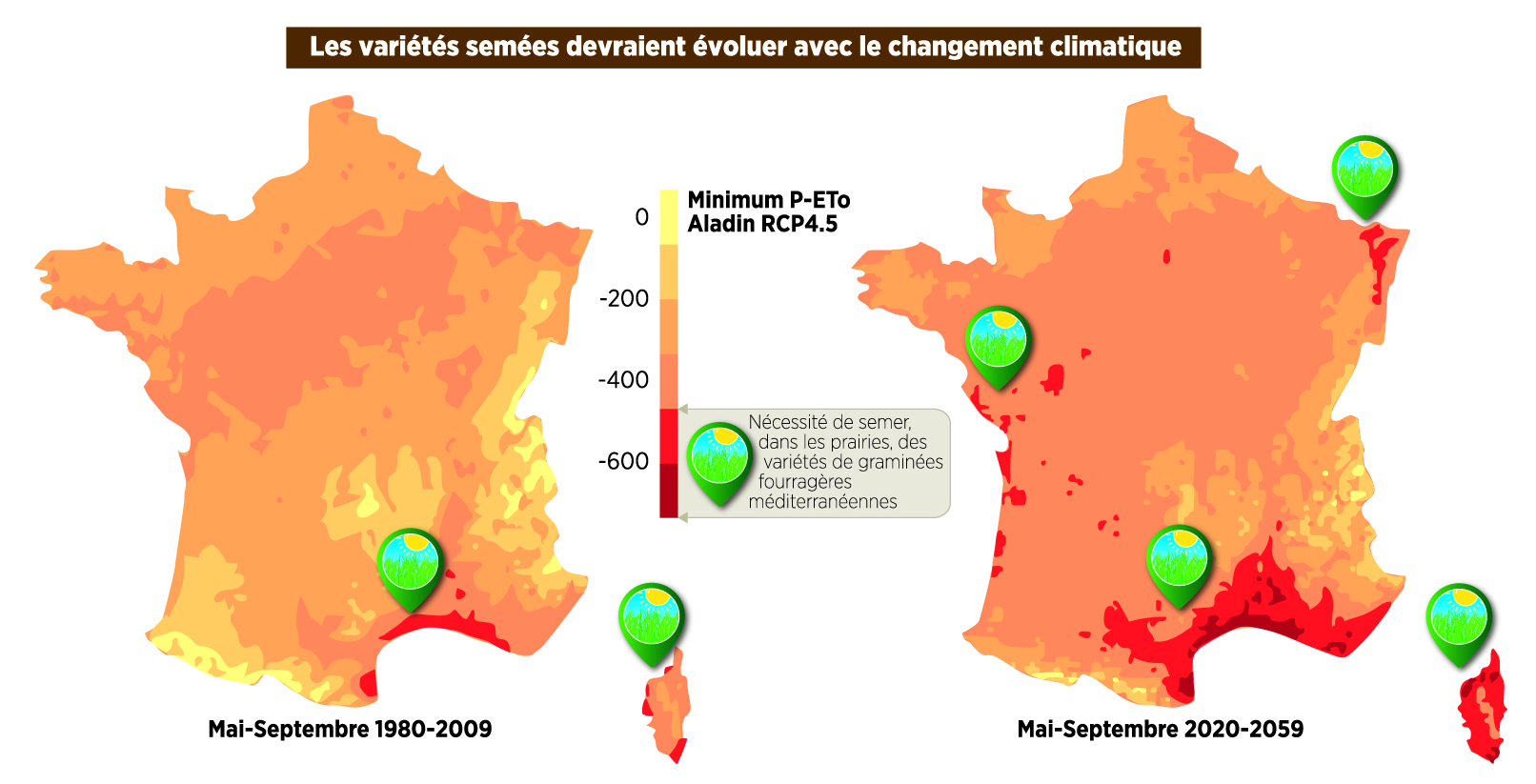Climate change and risks Reading time 3 min
Guiding the genetics of today to prepare the grasslands of tomorrow
Published on 11 January 2018
“The main levers for preparing grasslands to cope with climate change are genetic diversity within species and the diversification of the species sown,” explains Jean-Louis Durand, leader of the CLIMAGIE project - Meadow adaptation to climate change: genetic improvement and ecological intensification.
In 20 to 30 years from now, temperatures will be higher and rainfall will be more intense in winter and reduced in summer. “Plant breeding must therefore focus on varieties which are more productive during the summer for temperate zones, and during the autumn and winter for the Mediterranean area,” says the researcher.
The project has sought to analyse the genetic levers which can be used to adapt grasslands to climate change. And, while doing so, reduce the use of agricultural inputs (pesticides and fertilisers) and cutting greenhouse gas emissions.
Improved understanding of forage plants
The CLIMAGIE project organised a network of teams of INRAE ecologists, ecophysiologists, breeders and geneticists distributed across its Caen, Lusignan, Clermont-Ferrand, Toulouse and Montpellier sites. All the teams worked for four years to improve our knowledge of the main species and varieties sown in grasslands: tall fescue, cocksfoot, rye grass, white clover and lucerne. In total, 10 experiments were conducted in fields, greenhouses and controlled conditions, with varying temperatures and water inputs. “The aim is to improve our knowledge of plants in order to quickly provide these elements to variety breeders,” explains Jean-Louis. The researchers collaborated with private breeders and livestock farmers who produce their own seed.

Diversification is a winner
Among the research results obtained is the interest of using mixtures of species on the one hand, and varieties within the same species on the other. “Mixtures of varieties which don’t have the same water requirements at the same time are good for more stable grassland yields over the course of the year,” says the project leader.
Sowing a mixture of leguminous plants, lucerne or clover in grasses also has an advantage since legumes, which fix nitrogen from the air, avoid the need for nitrogen fertiliser inputs. “The challenge is to find a balance over time between the species and varieties in the mixture,” adds the researcher. “Grasses, for example, provide rapid soil cover thereby limiting weed development and the use of herbicides, but they must not smother the legume crops.”
Another INRAE research project (P3F) is currently examining the criteria for improving plants to be taken into account for cereal mixtures. “The goal is to provide livestock farmers with officially evaluated mixtures,” adds Jean-Louis.
Dormant yet productive
Several research projects have emerged from CLIMAGIE. Among them is DAC2024 (((possibility to link))) on the selection of forage plants for the Mediterranean area. “In this area, it is vital that plants do not grow during the summer, otherwise they die because of the lack of water,” explains Jean-Louis. “CLIMAGIE has shown that plants which remain dormant during the summer were no less productive and are therefore very interesting for the Mediterranean area. Dormancy is now a selection criterion for plant breeders.”
References:
- KALLIDA R.., ZHOURI L., VOLAIRE F., GUERIN A., JULIER B., SHAIMI N., FAKIRI M., BARRE P. (2016) Combining drought survival via summer dormancy and annual biomass productivity in Dactylis glomerata L. Frontiers in Plant Sciences. DOI: 10.3389/fpls.2016.00082
- PRIETO, I., VIOLLE, C., BARRE, P., DURAND, J. L., GHESQUIERE, M., LITRICO, I. 2015. Complementary effects of species and genetic diversity on productivity and stability of sown grasslands. Nature Plants, 1 (4), 1-5. DOI: 10.1038/NPLANTS.2015.33.
